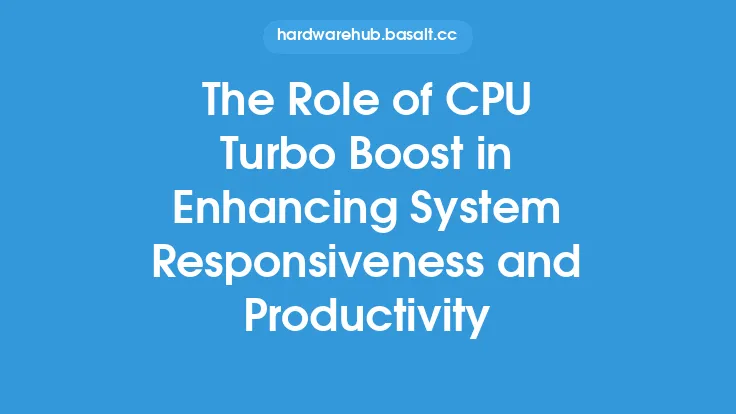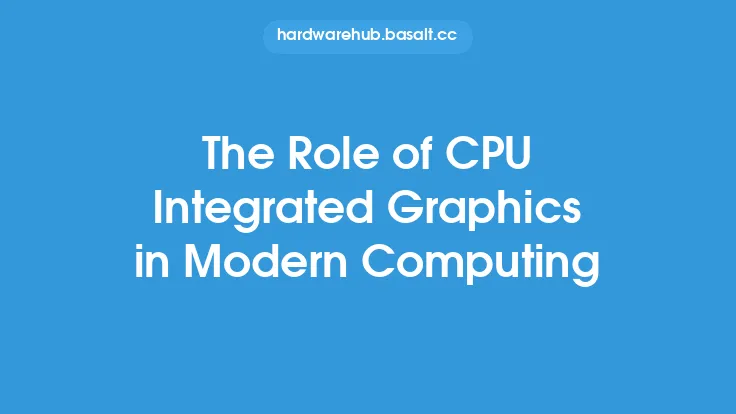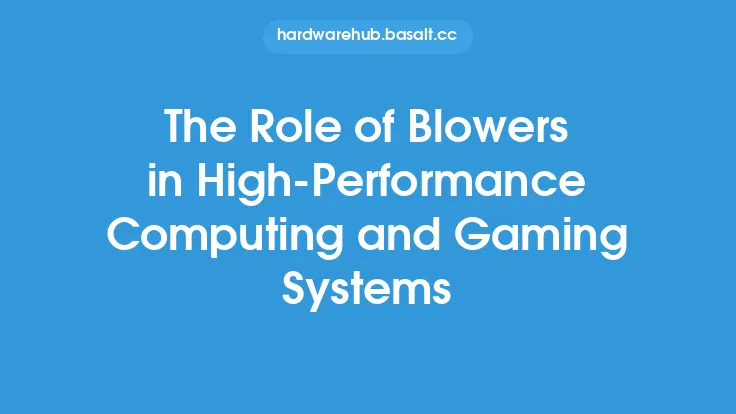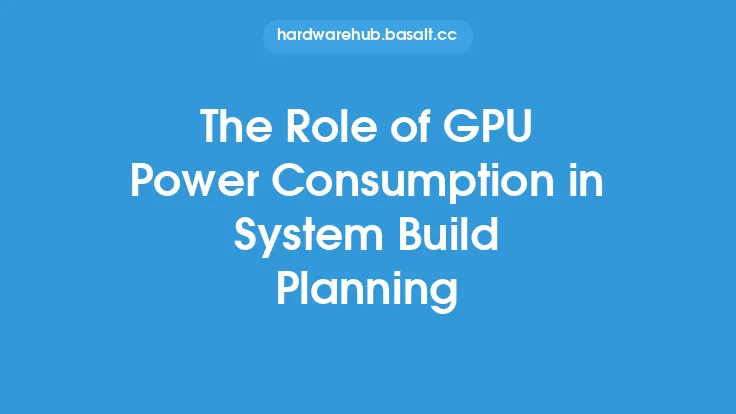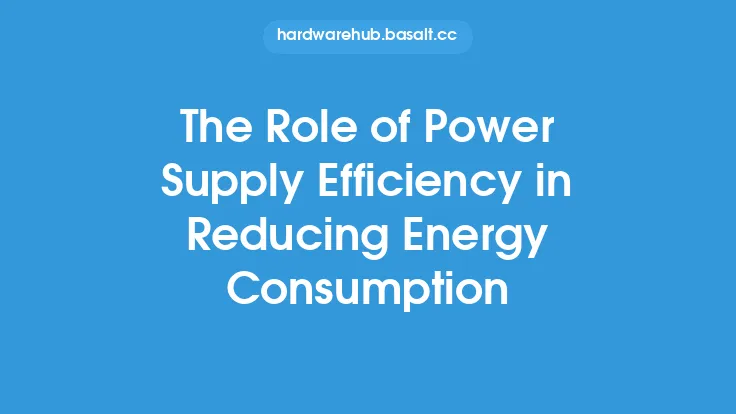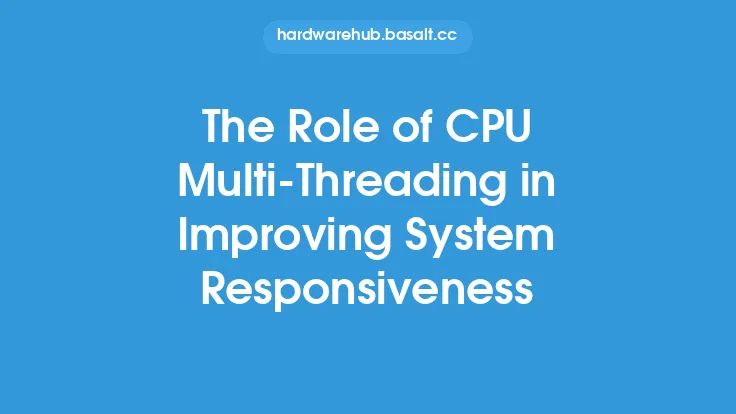The increasing demand for computing power and data storage has led to the proliferation of data centers and server environments. These facilities house thousands of servers, storage systems, and network equipment, all of which require significant amounts of power to operate. One of the key components that contribute to the power consumption of these facilities is the Central Processing Unit (CPU). In this article, we will delve into the role of CPU power consumption in data centers and server environments, exploring its impact on energy efficiency, heat generation, and overall system performance.
Introduction to CPU Power Consumption
CPU power consumption refers to the amount of electrical power required to operate a CPU. This power is used to perform calculations, execute instructions, and manage data. The power consumption of a CPU is typically measured in watts (W) and is influenced by several factors, including the CPU's architecture, clock speed, and voltage. In data centers and server environments, CPU power consumption is a critical concern, as it can significantly impact the overall energy efficiency and operating costs of the facility.
Factors Affecting CPU Power Consumption in Data Centers
Several factors contribute to CPU power consumption in data centers and server environments. These include:
- CPU Architecture: The design and architecture of the CPU can significantly impact its power consumption. For example, CPUs with multiple cores and threads tend to consume more power than those with fewer cores and threads.
- Clock Speed: The clock speed of a CPU, measured in gigahertz (GHz), also affects its power consumption. Faster clock speeds require more power to maintain.
- Voltage: The voltage supplied to the CPU can also impact its power consumption. Lower voltages can reduce power consumption, but may also affect system performance.
- Workload: The type and intensity of the workload can also influence CPU power consumption. For example, CPUs handling compute-intensive tasks like scientific simulations or data analytics tend to consume more power than those handling less intensive tasks like web serving.
Impact of CPU Power Consumption on Data Center Energy Efficiency
The power consumption of CPUs in data centers and server environments can have a significant impact on the overall energy efficiency of the facility. As CPUs consume more power, they generate more heat, which must be dissipated using cooling systems. These cooling systems, in turn, consume additional power, creating a vicious cycle of increasing power consumption and heat generation. Furthermore, the energy efficiency of a data center is often measured using the Power Usage Effectiveness (PUE) metric, which is calculated by dividing the total power consumption of the facility by the power consumption of the IT equipment. High CPU power consumption can negatively impact the PUE, making the data center less energy-efficient.
CPU Power Consumption and Heat Generation
The power consumption of CPUs in data centers and server environments is also closely tied to heat generation. As CPUs consume more power, they generate more heat, which can lead to increased temperatures within the data center. High temperatures can reduce the lifespan of equipment, increase the risk of component failure, and decrease system performance. To mitigate these effects, data centers often employ advanced cooling systems, such as air-side and water-side economization, to dissipate heat and maintain optimal operating temperatures.
Strategies for Reducing CPU Power Consumption in Data Centers
To reduce CPU power consumption in data centers and server environments, several strategies can be employed. These include:
- Server Virtualization: Consolidating multiple servers onto a single physical host can reduce the overall number of CPUs required, leading to lower power consumption.
- Dynamic Voltage and Frequency Scaling (DVFS): Adjusting the voltage and clock speed of CPUs based on workload demand can help reduce power consumption during periods of low utilization.
- CPU Selection: Choosing CPUs with low power consumption and high performance-per-watt can help minimize energy usage while maintaining system performance.
- Workload Optimization: Optimizing workloads to minimize CPU utilization and maximize efficiency can also help reduce power consumption.
Conclusion
In conclusion, CPU power consumption plays a critical role in data centers and server environments, impacting energy efficiency, heat generation, and overall system performance. By understanding the factors that affect CPU power consumption and employing strategies to reduce it, data center operators can minimize energy usage, lower operating costs, and maintain optimal system performance. As the demand for computing power and data storage continues to grow, the importance of managing CPU power consumption in data centers and server environments will only continue to increase.
